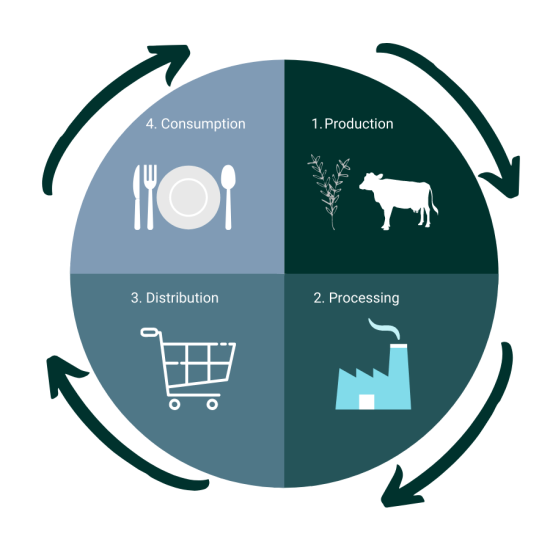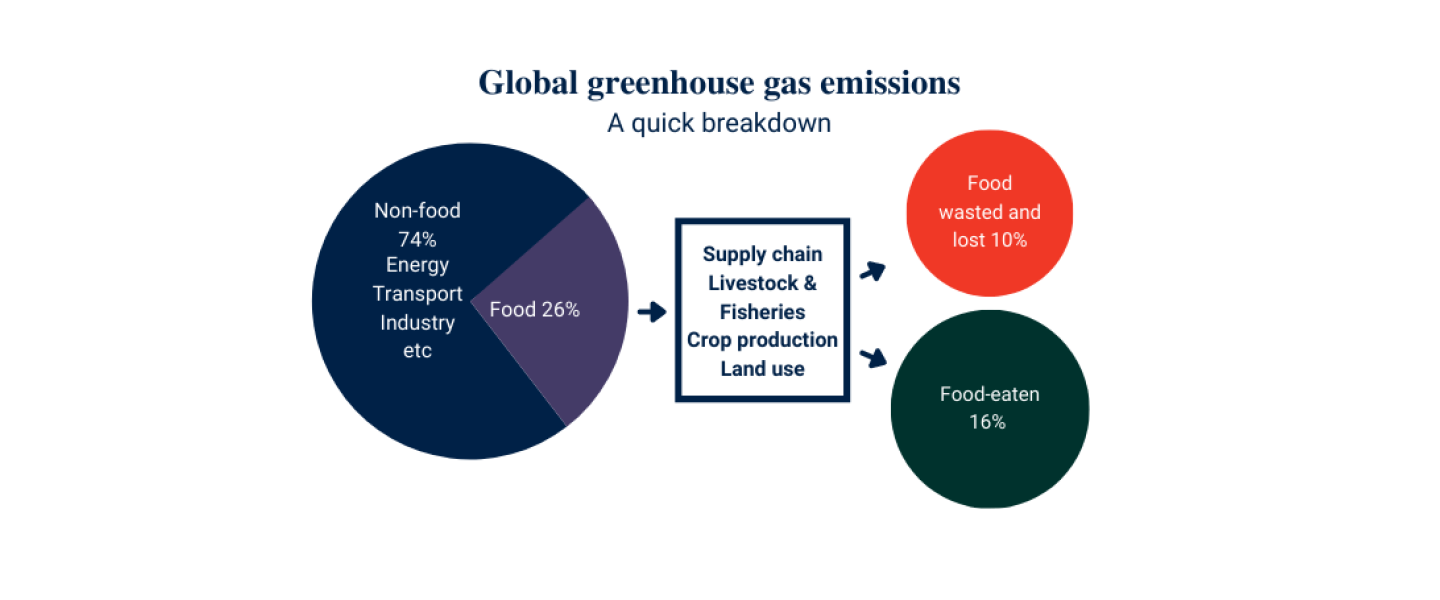Climate change poses unprecedented and complex challenges to global food systems.
Significant interventions in food system activities are needed in order to deliver safe, just, healthy, and sustainable food for all. As it stands, many activities in the food system are delivering harmful outcomes across the board in terms of food and nutrition security, sustainability, and well-being. It is widely agreed that innovative interventions and effective financing are needed across the food system to achieve these grand ambitions. A food systems approach, which considers not only the activities, outcomes, and actors all along the food chain from agriculture to consumption, but also the activities and institutions that support them, is effective in developing interventions with benefits accruing across systems.

There is still fierce debate on how climate finance can best help to achieve this. My wide-ranging research demonstrates climate finance targeted at the food system from earth to table needs to change, and specifically to broaden its target and scope, to be able to tackle the challenges facing us and future generations. This needs to happen with urgency. Extreme climate events continue to destroy farmer livelihoods and food security across the world and, in combination with the pandemic, there is a serious risk of hunger and famine for years to come.
In short, I suggest four ways of using climate financing through a food system approach:
1. Expanding the remit of funding mechanisms to adopt a food systems approach
The food systems approach is useful for a comprehensive engagement across the ecosystem. But, funding mechanisms are still unduly limited to food production, with a few notable exceptions. This gap means that there is great untapped potential in improving a range of food system outcomes not just for the environment but also for society so that people do not go hungry or lack vital nutrients in their diet
2. Integrating a long-term, food systems perspective in climate financing, and shifting away from programmatic and short-term funding models
It is critical to recognise the current limitations of programmatic, short-term, and siloed funding mechanisms. While the thinking around resilient, systematic, and paradigm-shifting change is being incorporated into climate finance, my analysis demonstrates that interventions are fragmented and seldom address a systems perspective. This means that the gains made in specific areas of the food system are being limited by the fact that complementary interventions are not made elsewhere. The benefits from improved food production, for example, are diluted when 40% of all food grown remains uneaten. Food waste alone accounts for 10% of all green house gas emissions.[i] It is therefore recommended that climate financing projects take a long- term, food systems perspective in planning and implementing interventions.

3. Developing better data capture and communication mechanisms
Better data is needed to give financiers, project developers, and funding reviewers the information they need to make decisions about where best to put money into food projects. Data from the application of climate-smart agriculture can direct funding towards green and climate resilient practices to transform the food system.[ii] Similarly, strong and clear investment criteria and indicators in the food value chain, such as the storage and processing of crops using low carbon and resilient approaches, can encourage investments.
4. Designing collaboration and match-making tools
To be successful project developers must have the right tools and the necessary stakeholder engagements. This will allow for the transition to more systems-oriented climate financing that is grounded in local and national contexts. People involved in climate finance need to be working alongside bodies like the Consultative Group on International Agriculture Research (CGIAR) to understand how they can invest more widely, and more wisely. The time is ripe for this collaborative approach too. The momentum built from the UN’s Zero Hunger Sustainable Development Goal will ensure that innovative financing solutions are systems oriented from the beginning of the process, instead of being an afterthought.
Working together is key to success on ground too. My analysis shows the strength of interdisciplinary project development. This approach is vital and needs to be adopted immediately as institutions at different scales are exploring opportunities for national governments and other actors, to move beyond food production to building a low-carbon and climate-resilient food system. Failure to do so risks not only wasting money, but also valuable time in the fight to ensure food supply for all in the face of a changing climate.




